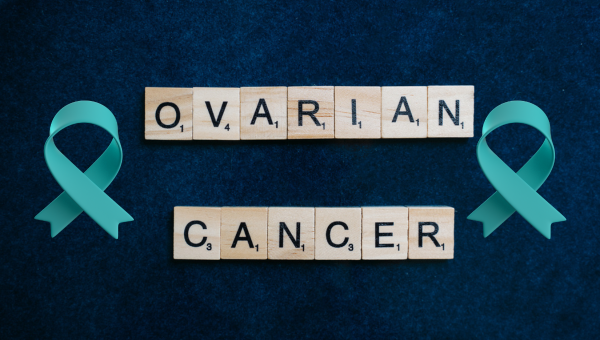06
Feb
The Link Between Ovarian Cancer and Pesticides Increases Among Female Farmers

(Beyond Pesticides, February 6, 2024) A study published in Occupational and Environmental Medicine finds that pesticide exposure, especially during puberty, can play a role in ovarian cancer development among female farmers. Although there are many studies that evaluate the risk for cancers among farmers, very few pieces of literature cover the risk of ovarian cancer from pesticide exposure. Additionally, this study notes suggests the role of hormones in ovarian cancer prognosis and development, highlighting an association with endocrine disruption. Exposure to past and current-use endocrine-disrupting chemicals (EDCs), like pesticides, has a long history of severe adverse human health effects. Endocrine disruptors are xenobiotics (i.e., chemical substances like toxic pesticides foreign to an organism or ecosystem) present in nearly all organisms and ecosystems. The World Health Organization (WHO), European Union (EU), and endocrine disruptor expert (deceased) Theo Colborn, Ph.D., classify over 55 to 177 chemical compounds as endocrine disruptors, including various household products like detergents, disinfectants, plastics, and pesticides. Endocrine disruption can lead to several health problems, including hormone-related cancer development (e.g., thyroid, breast, ovarian, prostate, testicular), reproductive dysfunction, and diabetes/obesity that can span generations. Therefore, studies related to pesticides and endocrine disruption help scientists understand the underlying mechanisms that indirectly or directly cause cancer, among other health issues.
The study evaluates a group of 59,391 female farmers with lifelong exposure to pesticides through agriculture and reproductive health. The participants are from an AGRIculture and CANcer (AGRICAN) cohort, a large prospective cohort of subjects in agriculture with links to cancer among active and retired males and females, farm owners and workers, living in areas with a population-based cancer registry. The study investigates the role that hormonal factors (e.g., endocrine disruption) from pesticide exposure plays in reproductive health issues, including ovarian cancer, during specifically sensitive exposure windows (i.e., children, puberty, menopause). The results find 262 incidences of ovarian cancer over a 10-to-12-year period. Women in agriculture working with pigs have the highest risk of ovarian cancer, followed by women growing fruit and women applying potato seed treatments. Exposure during puberty does have a positive association with ovarian cancer risk. Although the risk of ovarian cancer is reduced among women born on farms growing grain cereal or breeding pigs, the risk of other cancer and health issues remains.Â
The connection between pesticides and associated cancer risks is not a new finding. Many pesticides are “known or probable” carcinogens (cancer-causing agents), and widespread uses only amplify chemical hazards, adversely affecting human health. Several studies link pesticide use and residue to various cancers, from the more prevalent breast cancer to the rare kidney cancer, nephroblastoma (Wilms’ tumor). Sixty-six percent of all cancers have links to environmental factors, especially in occupations of high chemical use. At least 45 different cancers have associations with work-related chemical exposure. Although the link between agricultural practices and pesticide-related illnesses is stark, over 63 percent of commonly used lawn pesticides and 70 percent of commonly used school pesticides have links to cancer. U.S. National Institutes of Health’s National Cancer Institute also finds many cancer-causing substances are endocrine disruptors. The entire endocrine system directly affects traditional endocrine glands and their hormones and receptors (i.e., estrogens, anti-androgens, thyroid hormones), greatly influencing hormone cancer incidents among humans (e.g., breast, prostate, and thyroid cancers). Several studies and reports, including U.S. Environmental Protection Agency (EPA) data, identify hundreds of chemicals as influential factors associated with hormone-related cancer risk. There are grave concerns over exposure to endocrine (hormone) disrupting chemicals and pollutants that produce adverse health effects. Over 296 chemicals in consumer products can increase breast cancer risk through endocrine disruption, so it is essential to understand how chemical exposure impacts chronic disease occurrence.Â
This study is one of the first to comprehensively assess the association between specific agricultural exposures among female farmers and ovarian cancer. Adding data on agricultural exposure, including duration and intensity of exposure, adds a new perspective on how these chemicals impact female farmers’ health. The study also points to hormonal factors (i.e., endocrine disruption) increasing ovarian cancer risk.  The connection between cancers and EDCs is historically established by the International Agency for Research on Cancer (IARC) and the U.S. National Toxicology Program (NTP), classifies many EDCs as possible carcinogens based on epidemiological studies. Despite women in agriculture using fewer pesticides than men, the risk of pesticide exposure remains significant enough to call for further investigation of how these chemical exposures increase the risk of all health issues.
There is a lack of understanding of the etiology of pesticide-induced diseases, including predictable lag time between chemical exposure, health impacts, and epidemiological data. Exposure to pesticides can increase the risk of developing chronic illnesses that may be rare and disproportionately impact various populations. Cancer is one of the leading causes of death worldwide, with over eight million people succumbing to the disease every year. Notably,  IARC predicts an increase in new cancer cases from 19.3 million to 30.2 million per year by 2040. Therefore, studies related to pesticides and cancer will aid in understanding the underlying mechanisms that cause the disease.
Understanding the health implications of pesticide use and exposure for humans is essential, particularly when pesticides increase chronic disease risk. Beyond Pesticides tracks the most recent news and studies on pesticides and related topics through the Daily News Blog and Pesticide-Induced Diseases Database (PIDD). For more information on the adverse effects of pesticides on human health, see PIDD pages on cancer (including ovarian cancer), endocrine disruption, and other diseases.
Moreover, proper prevention practices, like buying, growing, and supporting organics, can eliminate exposure to toxic pesticides. Organic agriculture has many health and environmental benefits, as it curtails the need for chemical-intensive agricultural practices. Regenerative organic agriculture nurtures soil health through organic carbon sequestration, preventing pests and generating a higher return than chemical-intensive agriculture. For more information on why organic is the right choice, see the Beyond Pesticides webpage, Health Benefits of Organic Agriculture.Â
All unattributed positions and opinions in this piece are those of Beyond Pesticides.










